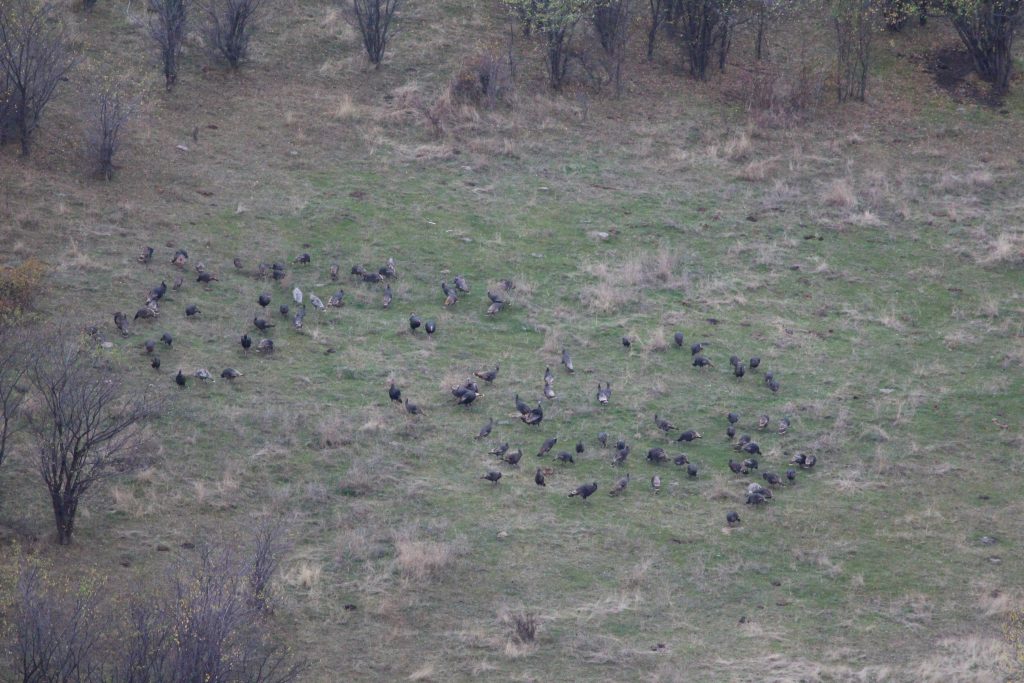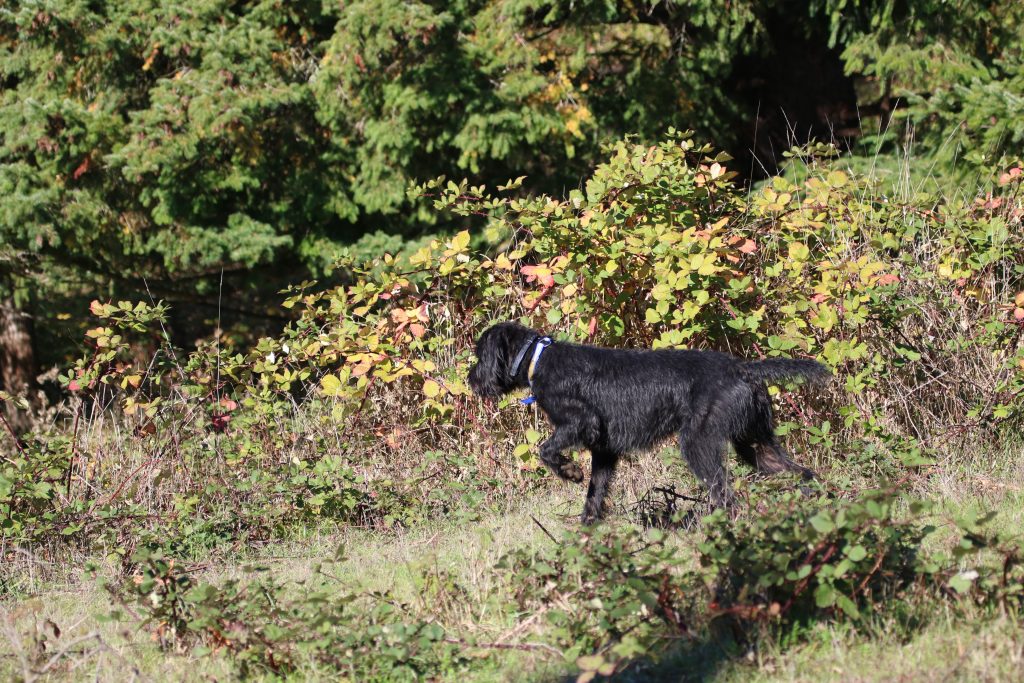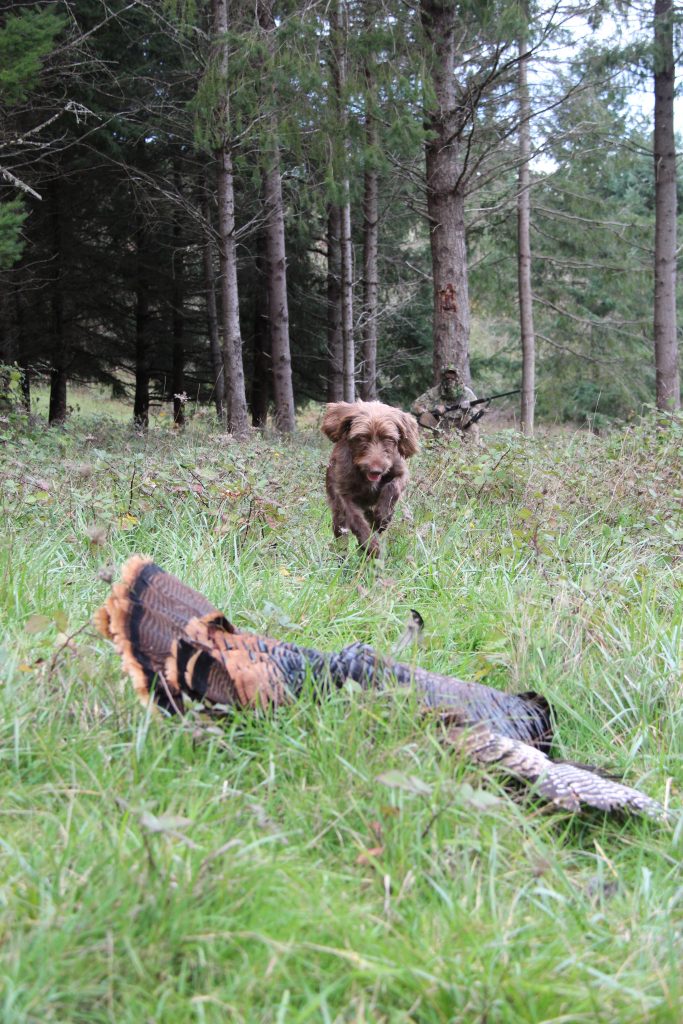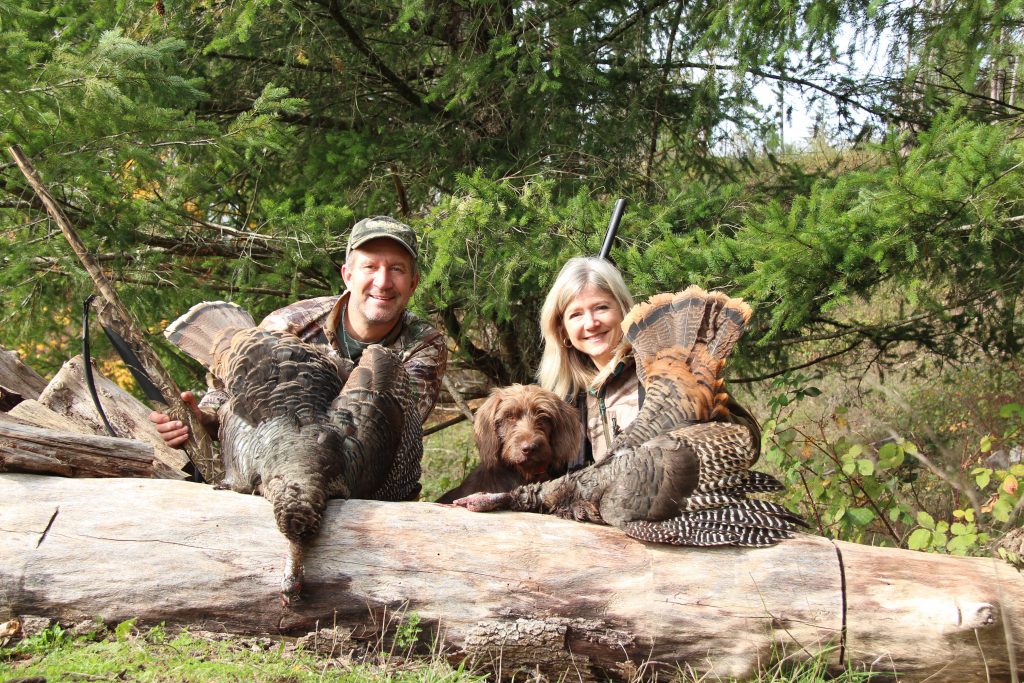Maneuvers Of The Fall
In many states, you can use various methods to hunt autumn turkeys. And no matter which approach you choose, the results can be rewarding when a hunt comes together.
Echo’s eyes rolled as she tracked movement to our left. She knew not to move. Eight paces away, a hen approached, responding to a series of kee-kees I’d offered.
My 3-year-old pudelpointer, a versatile hunting dog crossed between the German hunting poodle and the English Pointer, and I sat against the base of a Douglas fir tree. Ten minutes earlier, I’d sent her to bust up a flock of turkeys as they fed uphill, through an opening 150 yards away. Then I called her back to me.
With birds scattered throughout the forest fringe, Echo and I moved under the cover of timber and set up on the edge, where I issued assembly calls. The broken flock was calling aggressively during the October afternoon. First, a hen came in, followed by a pair of jakes. I let out soft yelps with a diaphragm call, and a hen replied with a crisp kee-kee. Then the woods came alive.
As I nestled into the shotgun, ready to pull the trigger on a jake, a tom strode out of the trees, behind. Birds were between us, but when the gobbler finally cleared, I didn’t hesitate. Echo tried but just couldn’t retrieve the bird, which tipped the scales at 23 pounds.
I’ve enjoyed many fall and winter turkey hunts with dogs, as well as calling and using decoys. Both approaches can be unpredictable during autumn but so rewarding when it comes together.
The Flush
When fall turkey hunting with a dog, trust it. The scent laid down by a turkey greatly surpasses that of a quail or pheasant, meaning dogs can detect odors from surprising distances, in a range of challenging habitats and conditions.
A few seasons ago, my wife Tiffany and I were hunting on Halloween. We watched a flock of turkeys plucking insects on a hillside. When the flock turned uphill on a game trail leading into timber, we let Echo loose. Because of good cover, the flock had no idea Echo was approaching. She sprinted in, scattering the flock.

Tiffany and I quickly covered almost 200 yards but failed to find Echo or any turkeys. Figuring she was on a chase, we listened. Soon we heard an alarm putt 20 yards in front of us, followed by another 30 yards to our left. We worked around a big patch of briars and found Echo on point. When we approached, a turkey flushed from the ground, and I shot it. Then the hillside erupted. Tiffany filled her tag on a bird that tried escaping out the backside of a fir tree. Echo proudly retrieved both birds. In that case, most of the turkeys hunkered in cover while a few sought safety in trees. There’s no set rule as to how turkeys react when surprised.

The Track
A dog can also track turkeys without first seeing them. The challenge comes in running across a turkey in the right habitat so it holds rather than runs or flies.
If there’s enough cover to hide an approaching dog, turkeys usually hold when a dog catches up to them. I’ve had no luck tracking and holding turkeys in open short-grass fields.
This past fall, I caught a lone tom on a trail camera at midday. I took Kona, my 5-year-old male pudelpointer. He has tracked many fall turkeys. We worked into the wind, along the base of some rolling hills. Timber dominated the upper hillside, and briars and bushes were sparse enough to weave our way through below.
We covered more than a half-mile before Kona paused, his nose stretching to the sky. His tail wagged, and then he was off. Kona ran fast, sometimes with his nose to the ground, sometimes with his nose in the air, catching updrafts.
Suddenly, 75 yards ahead of me, Kona stuck a perfect point. I worked around him, searching for a turkey. Finally, I found the lone gobbler, body flat to the ground, neck outstretched. I’d witnessed this ploy before when surprising turkeys in sparse cover. As I moved to the side, the tom became nervous and broke. A quick shot ended the hunt, and soon Kona was bulldozing his way through briars to fetch the 21-pound bird.

Calling and Decoys
This past January, we experienced unseasonably warm weather, and toms were gobbling like I’d never heard. It was the second year since Oregon, my home state, had extended the fall turkey season through January. I grabbed the decoys and headed to meet good friend Jody Smith.
Smith is also a full-time guide (jodysmithguideservice.com), and he confirmed that calling and decoying works during winter.
“Last January, I set out a strutter and hen decoy and had more than 50 turkeys come on a dead run,” he said. “The toms attacked the strutter, bending the ¼-inch steel stake at a 45-degree angle. They strutted, gobbled and molested the hen decoy, too.”
Within 30 minutes of setting up the decoys and calling, Smith and I had seven gobblers come in. They were in a tight wad, strutting and gobbling, but no matter how much we called, they wouldn’t separate. They danced around the decoys and then moved off in a compact bunch, as if in a third-grade soccer match. I didn’t fire a shot, as it’s a one-bird daily limit.
Two hours and lots of calling later, we had a flock of more than 20 gobblers approach. This time, a nice longbeard separated, and I dropped it.
In winter, a day of sunshine and dry conditions can invigorate a bachelor flock, and seductive yelps and kee-kees can bring them on the run. In addition to scouting, I rely on trail cameras to pattern fall turkeys.
You can hunt fall turkeys many ways. If you live in or near a state that allows hunting them with your dog, do it, and you’ll be hooked for life. If you can acquire multiple tags, that’s even more opportunity to experience the pure joy of pursuing the great birds of autumn.
Note: For signed copies of Scott Haugen’s popular book Western Turkey Hunting: Strategies For All Levels, visit www.scotthaugen.com.

CONNECT WITH US
National Wild Turkey Federation
770 Augusta Road, Edgefield, SC 29824
(800) 843-6983
National Wild Turkey Federation. All rights reserved.
